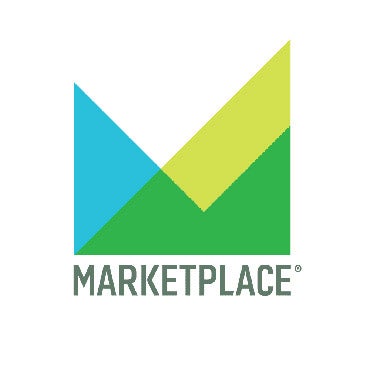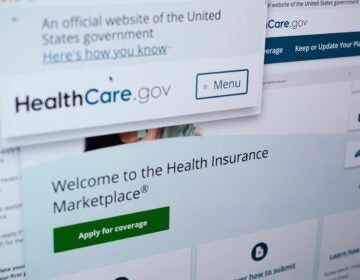Pennsylvanians are scrambling to afford Affordable Care Act health insurance price hikes after no subsidy deal in Congress
About 3 in 4 Pennsylvanians will still qualify for some tax credits, but the amounts will, on average, be smaller. Others face paying for plans at full price.
Listen 2:48
Lily McCausland, 29, lives in Philadelphia, where she workers at a small printing company. She gets health insurance through Pennie, the state's Affordable Care Act marketplace, but faces higher premium costs in 2026 without enhanced premium tax credits. (Nicole Leonard/WHYY)
From Philly and the Pa. suburbs to South Jersey and Delaware, what would you like WHYY News to cover? Let us know!
For the past year, Lily McCausland has taken full advantage of having a health insurance plan that costs her $0 a month in premium payments, “which felt like winning the lottery.”
The 29-year-old lives in Philadelphia, where she works full time at a small printing company. Her job doesn’t have to offer health benefits. Last year, she was able to sign up for insurance through Pennie, Pennsylvania’s Affordable Care Act marketplace, with the aid of enhanced premium tax credits.
“I got blood tests, I got every gynecological, I mean, I did things I probably didn’t really even need,” she said. “I got dental exams and my eye exams. I mean, it’s been amazing in that way.”
But people like McCausland are now scrambling to figure out how they will afford health insurance next year as premium prices rise and COVID-era boosted tax credits that help offset those costs are set to expire at the end of December.
The situation has become even bleaker, some Pennie customers say, after Congress voted to end the government shutdown last week without a deal to extend the health subsidies.
“Passionate and pissed. I’m pissed,” McCausland said. “It’s so emotional and when I see this playing out on such a big scale and these desperate people, everybody is just looking for help.”
Premiums ‘double’ for Pennsylvanians next year
Nearly 500,000 Pennsylvanians who either don’t get health benefits through an employer or who run their own businesses get insurance through Pennie. Annual open enrollment began Nov. 1 and lasts through December.
Most customers have qualified for premium tax credits after the subsidies were expanded in 2021. Now, those additional credits will expire unless Congress intervenes.
About 3 in 4 people will still qualify for some amount of financial assistance, said Devon Trolley, executive director at Pennie. But the amounts will generally be smaller.
Others will pay double, on average, to keep their health insurance in 2026, she said.
Small business owner Tori Baggot, who lives in Pittsburgh, said that without the enhanced tax credits, her monthly premium costs will go from $197 to $365 come January.
“It’s pretty intense and I’m trying to figure it out,” she said. “I needed to keep this coverage because I have chronic health problems and I need to stay within the network of all the doctors that I have currently, so that was still the best option for me to keep that plan.”
The sticker shock is causing some people to drop insurance altogether.
“Typically, we see a lot more new enrollments than we do people dropping coverage. This year, it’s in reverse,” Trolley said. “We see a lot more people dropping coverage than signing up for the first time. About a 2-to-1 ratio. So, we’re seeing about twice as many people drop than sign up.”
Cutting costs to keep coverage
With an annual income of $50,000, McCausland won’t qualify for any premium tax credits next year. It’ll cost $275 a month to keep her current bronze insurance plan.
To afford it, McCausland said she’d need to get a second job or make cuts elsewhere.
“This is the most amount of money I’ve made in a very long time, steadily,” she said, “and I still save no money. And I don’t even live that crazily. I don’t even have Wi-Fi. I cut that out when I got the first notice that ‘Your health insurance might go up.’”
McCausland also started selling some furniture to make extra cash and is considering having a roommate.
“I do need to figure something out,” she said. “It’s just that the $275, that means groceries I’m not going to spend as much money on. And that means other people are making harder decisions.”
McCausland has gone uninsured before. After studying film and media and graduating from college, she did some work with a documentary team and took on multiple part-time jobs in food service and retail. None of those gigs came with health benefits.
It was a risk then, she said. But as she gets older with more health care needs, it feels even riskier.
“I did just walk around like, ‘Well that’s what poor artists do, it’s how it’s always been,’” she said. “The older I get, the less being uninsured is like, ‘Whatever man, I’ll make it work’ or ‘I have credit cards.’ You just start to think about five years down the line.”
She’s also considering switching to a cheaper catastrophic health plan, which has high deductibles, but covers preventative health services and can be used for costly and serious illnesses and injuries.
An individual might have to spend over $10,000 on health services before coverage fully kicks in, which could leave people with more medical debt.
Congress could still extend the health subsidies, or come up with another plan to reduce health insurance costs. For now, McCausland said she hopes people come together to help each other and spread awareness about the challenges they face.
“I just feel like the only hope is that more people are pissed and passionate,” she said.

Get daily updates from WHYY News!
WHYY is your source for fact-based, in-depth journalism and information. As a nonprofit organization, we rely on financial support from readers like you. Please give today.






